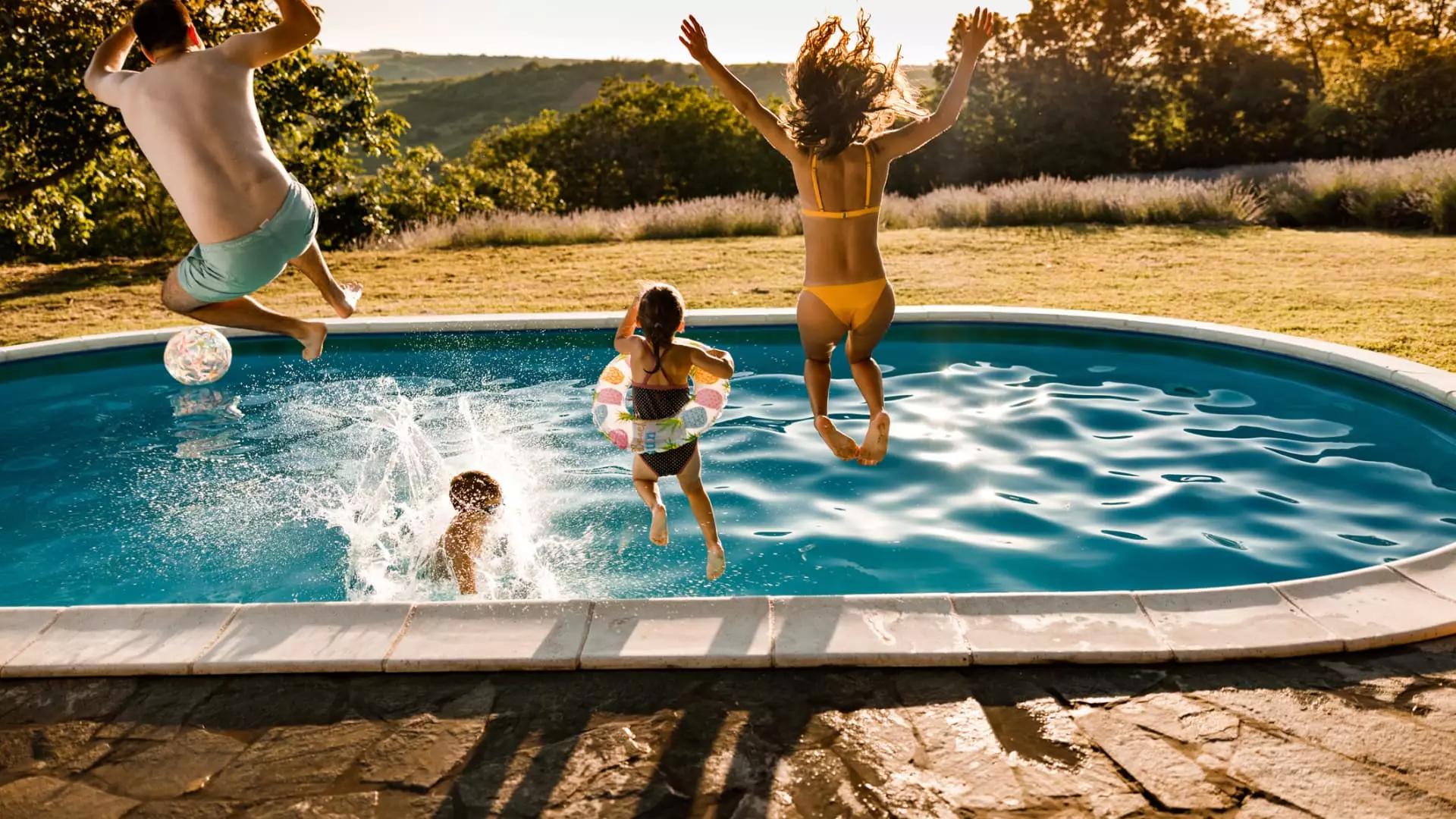The COVID-19 pandemic brought about a surge in home improvement projects, including swimming pool installations, as Americans were forced to spend more time at home. However, recent indicators suggest a shift in consumer behavior as households prioritize experiences like travel and dining out over renovations. Pool Corp., a major pool equipment distributor, anticipates a 15% to 20% decrease in new pool construction this year. Local contractors across the country are also experiencing a slowdown in demand, signaling a change in the market dynamics.
While overall consumer spending remains strong, households with disposable income are allocating their funds towards leisure activities rather than large home upgrades. Rising food costs and the Federal Reserve’s efforts to combat inflation by maintaining high interest rates have led to a decline in nonessential purchases, including big-ticket items like swimming pools. This trend has been developing over several months, with other industries, such as Traeger Grills, also reporting lower revenues in the post-pandemic recovery phase.
Businesses that rely on consumer spending for home improvements, such as pool builders, are adjusting to the changing market conditions. While pool installations saw a 20% increase in 2020, the recent slowdown has prompted companies to reevaluate their strategies and pricing. Despite facing challenges, industry players like Scott Payne and Skip Ast have managed to sustain their businesses by raising prices to cover rising materials costs and offering additional services to clients.
In response to reduced demand, companies like Shasta Pools have introduced new initiatives to attract customers and retain market share. By launching online calculators for cost estimation and establishing pool care divisions for maintenance services, Shasta has positioned itself to capture a larger portion of the market. Similarly, Pool Corp. noted a silver lining in the decline in installations, as maintenance-related product sales have remained stable, indicating a growing demand for upkeep services.
As climate change leads to hotter and more frequent heat waves, the perception of swimming pools as essential amenities may shift. Despite the current decline in installations, there is potential for sustained demand for upkeep and maintenance services in the long run. While the industry faces challenges in the short term, adapting to changing consumer preferences and focusing on innovation will be critical for businesses to thrive in the evolving market landscape.
The decline in swimming pool installations reflects a broader shift in consumer behavior towards experiences and away from home renovations. Industry players must remain adaptable and innovative to navigate the changing market dynamics and capitalize on emerging opportunities. By focusing on customer service, cost transparency, and post-installation maintenance, businesses can position themselves for long-term success in the evolving home improvement industry.

